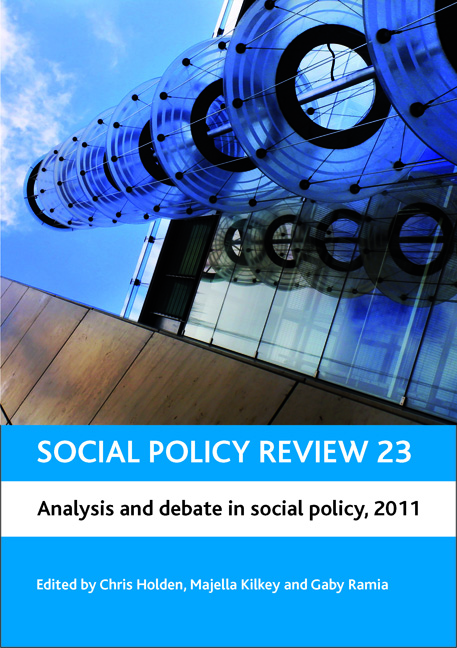seven - Welfare to work after the recession: from the New Deals to the Work Programme
Published online by Cambridge University Press: 01 September 2022
Summary
Introduction
Over the past decade there has been a radical change in the British welfare state. In addition to its traditional role in assessing eligibility for and paying cash benefits, the social security system is now expected to play a far greater role in preparing working-age people for, and connecting them to, the labour market. The objective has been to create an active benefit system that reinforces work incentives and reduces costs and ‘welfare dependency’.
There were three core components of the welfare to work strategy pursued by the previous Labour government. The first element involved the creation of an ‘employment first’ system where most working-age people who claim benefits were expected to engage, at least initially, with employment-related services. The second component was to ‘make work pay’ through tax credits, a national minimum wage and a variety of other services to assist with childcare and the transition into work. The final element involved reforms to employment programmes and services and to the institutions and agencies that delivered them.
Throughout the economic downturn and despite increased unemployment, the Labour government continued to implement its strategy for increasing work-related requirements in the benefit system. Between 2008 and 2010 job search requirements were gradually extended to lone parents with children aged over seven, and from 2008 a new employment and support allowance (ESA), with a stricter work capacity assessment (WCA), replaced earlier disability benefits for new and repeat claimants. Over the same period front-line job centres coped with marked increases in the number of people seeking jobs and claiming benefits and the Department for Work and Pensions (DWP) introduced a succession of employment and training programmes targeted at those most at risk from the recession – those made redundant and young people entering the labour market.
Following the 2010 General Election the Coalition government has also placed welfare reform at the heart of its plans for reducing worklessness and public expenditure. The strategy will involve ‘transformational change’ to a welfare state now represented as ‘a vast, sprawling bureaucracy that can act to entrench, rather than solve, the problems of poverty and social exclusion’ (DWP, 2010a, p 9).
- Type
- Chapter
- Information
- Social Policy Review 23Analysis and Debate in Social Policy, 2011, pp. 127 - 146Publisher: Bristol University PressPrint publication year: 2011

